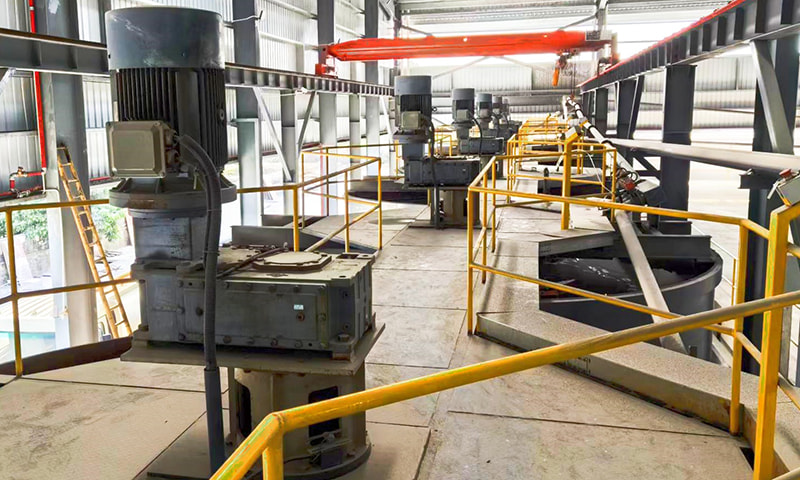What is an AAC block machine and how does it work?
The AAC block machine is specialized equipment designed for producing Autoclaved Aerated Concrete blocks, a lightweight yet durable building material. These machines transform raw materials like cement, lime, sand, and aluminum powder into high-quality construction blocks through an automated process.
The manufacturing process step-by-step
The complete production cycle involves several critical stages:
- Raw material preparation and mixing
- Casting and rising of the AAC mixture
- Pre-curing and hardening
- Wire cutting to precise dimensions
- Autoclaving for final strength development
Key components of an AAC block machine
Modern AAC production systems consist of several integrated components:
- Raw material silos and weighing systems
- Mixing and dosing units
- Casting molds and platforms
- Cutting machines with precision wires
- Autoclaves for steam curing
- Control systems and automation
How to choose the AAC block manufacturing plant for your needs
Selecting the right AAC production facility requires careful consideration of multiple factors that affect both initial investment and long-term operational efficiency.
Production capacity requirements
Capacity needs vary significantly based on market demand and project scale:
| Project Scale | Recommended Capacity | Investment Range |
|---|---|---|
| Small local projects | 50-100 m³/day | $200,000-$500,000 |
| Regional supply | 150-300 m³/day | $800,000-$1.5 million |
| Large commercial operations | 500+ m³/day | $2 million+ |
Automation level considerations
The degree of automation impacts both labor costs and production consistency:
- Manual systems require more workers but have lower upfront costs
- Semi-automatic systems offer a balance between cost and efficiency
- Fully automatic plants maximize output with minimal labor
AAC block machine price and cost analysis
Understanding the complete financial picture of AAC block production requires examining both initial investment and ongoing operational expenses.
Breakdown of machine costs
The total investment includes several components:
- Base machine price (30-50% of total)
- Installation and commissioning (10-15%)
- Ancillary equipment (20-25%)
- Training and documentation (5-10%)
- Spare parts inventory (5-10%)
Operational cost factors
Daily production expenses significantly impact profitability:
| Cost Factor | Percentage of Total | Cost Reduction Tips |
|---|---|---|
| Raw materials | 40-50% | Source local materials |
| Energy consumption | 20-25% | Optimize autoclave cycles |
| Labor | 15-20% | Implement automation |
| Maintenance | 5-10% | Preventive maintenance |
Advantages of AAC blocks over traditional bricks
AAC blocks offer numerous benefits compared to conventional clay bricks and concrete blocks, making them increasingly popular in modern construction.
Structural and performance benefits
The unique properties of AAC provide significant advantages:
- Lightweight (1/3 weight of concrete) reduces structural loads
- Excellent thermal insulation (3-4 times better than clay bricks)
- Superior fire resistance (up to 4 hours fire rating)
- High compressive strength for load-bearing walls
- Precision dimensions enable faster construction
Environmental advantages
AAC production is more sustainable than traditional materials:
| Parameter | AAC Blocks | Clay Bricks |
|---|---|---|
| Energy consumption | Low | High |
| Raw material usage | Efficient | Wasteful |
| Recyclability | High | Low |
| Carbon footprint | Small | Large |
Maintenance tips for AAC block making machine
Proper maintenance is crucial for ensuring long-term reliability and consistent product quality from your AAC production equipment.
Daily maintenance routines
These simple practices can prevent major issues:
- Clean mixing blades and discharge gates after each shift
- Check hydraulic systems for leaks and proper pressure
- Lubricate all moving parts as specified
- Inspect cutting wires for wear and tension
- Verify sensor and control system operation
Scheduled maintenance activities
Planned maintenance prevents unexpected downtime:
| Component | Maintenance Interval | Key Tasks |
|---|---|---|
| Mixing system | Monthly | Bearing inspection, seal replacement |
| Cutting system | Quarterly | Wire replacement, alignment check |
| Autoclave | Biannually | Safety valve testing, insulation check |
| Control system | Annually | Software updates, calibration |
Latest technological advancements in AAC production
The AAC manufacturing industry continues to evolve with new technologies that improve efficiency, quality, and sustainability.
Innovations in production technology
Recent developments include:
- AI-powered quality control systems
- Energy-efficient autoclaving processes
- Advanced foaming agents for better consistency
- IoT-enabled equipment monitoring
- Automated stacking and packaging systems
Future trends in AAC manufacturing
The industry is moving toward:
| Trend | Potential Impact | Timeframe |
|---|---|---|
| Carbon-neutral production | Reduced environmental impact | 5-10 years |
| Modular plant designs | Faster deployment | 3-5 years |
| Advanced material blends | Improved performance | 2-3 years |






